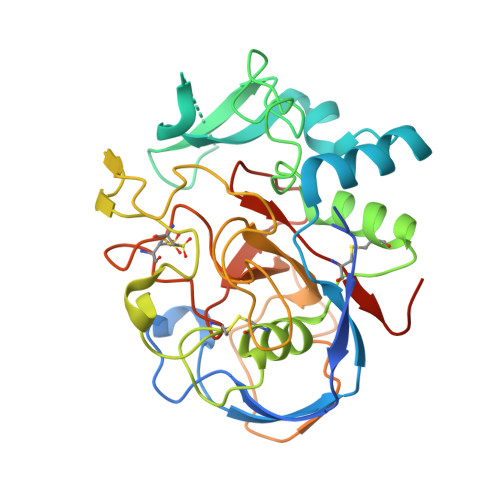De novo calcium/sulfur SAD phasing of the human formylglycine-generating enzyme using in-house data.
Roeser, D., Dickmanns, A., Gasow, K., Rudolph, M.G.(2005) Acta Crystallogr D Biol Crystallogr 61: 1057-1066
- PubMed: 16041070
- DOI: https://doi.org/10.1107/S0907444905013831
- Primary Citation of Related Structures:
1Z70 - PubMed Abstract:
Sulfatases are a family of enzymes essential for the degradation of sulfate esters. Formylglycine is the key catalytic residue in the active site of sulfatases and is generated from a cysteine residue by FGE, the formylglycine-generating enzyme. Inactivity of FGE owing to inherited mutations in the FGE gene results in multiple sulfatase deficiency (MSD), which leads to early death in infants. Human FGE was crystallized in the presence of traces of the protease elastase, which was absolutely essential for crystal growth, and the structure of FGE was determined by molecular replacement. Before this model was completed, the FGE structure was re-determined by SAD phasing using in-house data based on the anomalous signal of two calcium ions bound to the native enzyme and intrinsic S atoms. A 14-atom substructure was determined at 1.8 A resolution by SHELXD; SHELXE was used for density modification and phase extension to 1.54 A resolution. Automated model building with ARP/wARP and refinement with REFMAC5 yielded a virtually complete model without manual intervention. The minimal data requirements for successful phasing and the relative contributions of the Ca and S atoms are discussed and compared with the related FGE paralogue, pFGE. This work emphasizes the usefulness of de novo phasing using weak anomalous scatterers and in-house data.
- Department of Molecular Structural Biology, University of Göttingen, D-37077 Göttingen, Germany.
Organizational Affiliation:





















